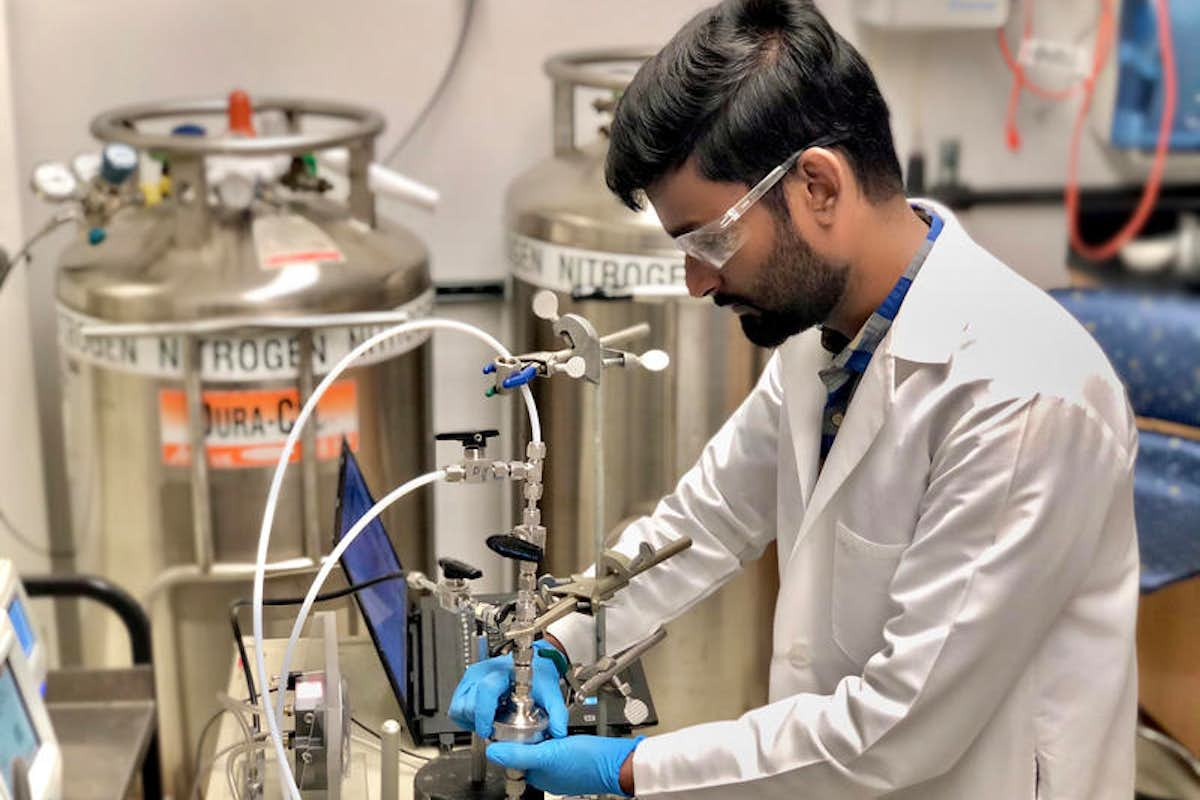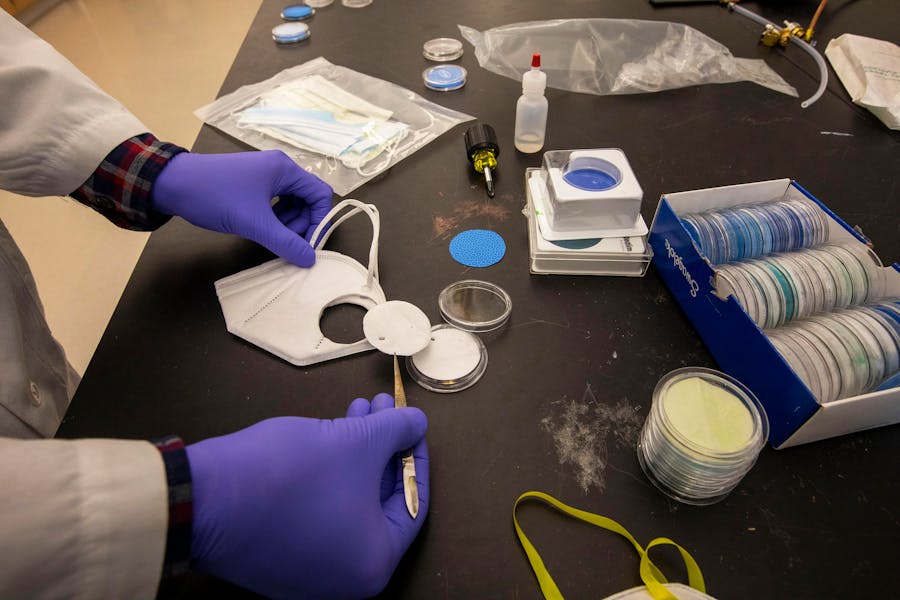In the media: St. Louis engineers put homemade mask materials to the test, as N95 supply dwindles
Associate professor Brent Williams and his colleagues at the Center for Aerosol Science and Engineering look for potential alternatives to N95 masks

With skyrocketing demand and limited supplies of protective gear, hospital workers across the U.S. have been fashioning their own makeshift masks during the pandemic.
Though there’s an array of possible mask materials available, it’s unclear how well each one protects against the coronavirus. A team of engineers at Washington University is now testing the filtration ability of different household and hospital-grade materials — and they’ve found some to be surprisingly effective.
Unless you’re wearing a cloth mask, anytime you sneeze, cough or talk, you’re spraying tiny droplets into the air about five times smaller than the width of a human hair.
These droplets of mucus and saliva shrink as they evaporate, making it even more difficult to capture them in a filter, said Brent Williams, an Washington University associate professor of engineering.
“These little particles — just a few hundred nanometers in size — will follow the airflow around the fiber and through the material,” Williams said. “There's this critical gap that's really hard to filter out, and we think the virus could be surviving in that particle size range.”
Testing mask materials
An N95 mask has a “complex grid of fibers” that traps tiny droplets — while still allowing you to breathe. But dangerously low supplies have pushed Williams and his colleagues at the Center for Aerosol Science and Engineering to look for potential alternatives.
Using a sophisticated experimental set up, engineering grad students are now testing how well certain fabrics block tiny particles, including bandanas and a fabric used to make medical gowns known as Halyard.

On one side, a machine bombards the fabric with salt particles of specific sizes, while another tabulates how many make it through. Grad student Audrey Dang spends her days keeping a careful watch on the equipment and adjusting the pressure valves, along with fellow students Shruti Choudhary and David Dhanraj.
“There’s a lot of this I would have automated,” Dang said. “But in the interest of making something that works right now, to get data now, it’s a pretty manual system.”
The research is ongoing, but early results have displayed surprising patterns.
A single layer of Halyard hospital gown material blocked about 65% of 300-nanometer particles, while a double layer filtered out more than 85%. In comparison, an N95 mask blocks at least 95% of particles in this size range.
Adding a layer of HEPA material, like a furnace filter or vacuum bag, can block more particles — but these materials can contain fiberglass and should be sandwiched multiple layers of fabric.
Other materials were not as effective at blocking small particles, Williams said, including dust masks, which performed about as well as bandanas. Another commercially available material, Filti, advertised online as comparable to the filtering capacity of an N95 mask, performed worse than the hospital gown material.
Reusing N95 masks: Is it safe?
As N95 supplies dwindle, the Centers for Disease Control and Prevention has said medical workers may sanitize and reuse masks as a “crisis capacity strategy.”
Some hospitals, including Barnes-Jewish, have begun sterilizing N95 masks with hydrogen peroxide gas to conserve resources. Others are using ultraviolet light, which preliminary research has shown to be effective for decontaminating masks.

“We're slated to run out of N95 masks,” Williams said. “The only option we have is to sterilize the masks that we have and continue to reuse them. Can we prove to ourselves that these masks that we’re treating are still safe to use?”
The research team’s early results show that masks sanitized twice with hydrogen peroxide gas were just as effective at blocking small particles as new masks. But these sanitized masks also shed microscopic particles, which could have long-term health consequences.
Still, it’s too soon to say definitively whether sanitized masks degrade over time, Williams said, because there are many factors at play — including how the masks are sanitized and how many times.
Despite pressure to produce results quickly, the team is taking its time to be sure the data are accurate.
“There are people making decisions urgently,” Dang said. “I see my role as providing them good data to help them make a better decision. If I can't provide good data, I'll provide no data.”



